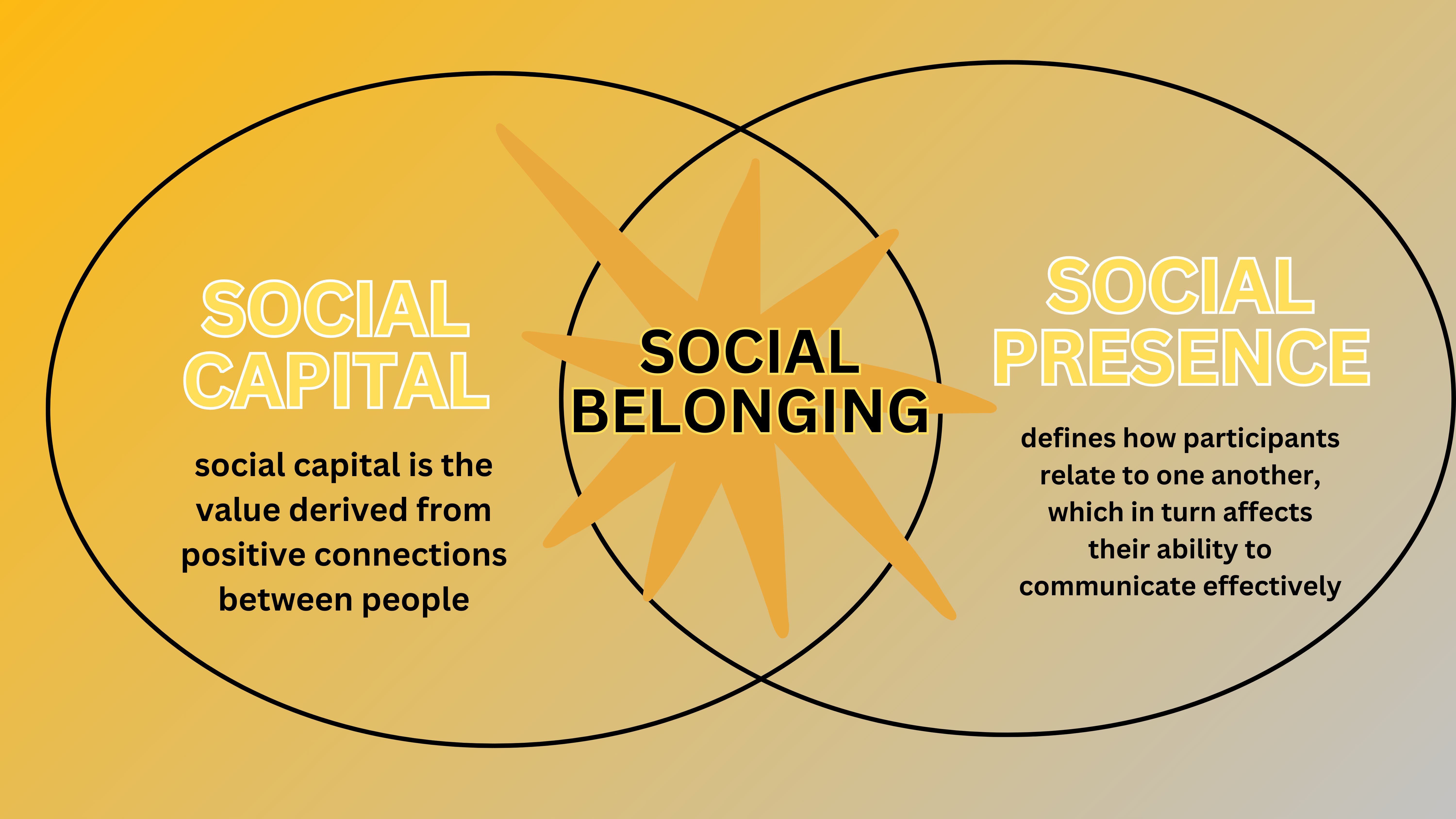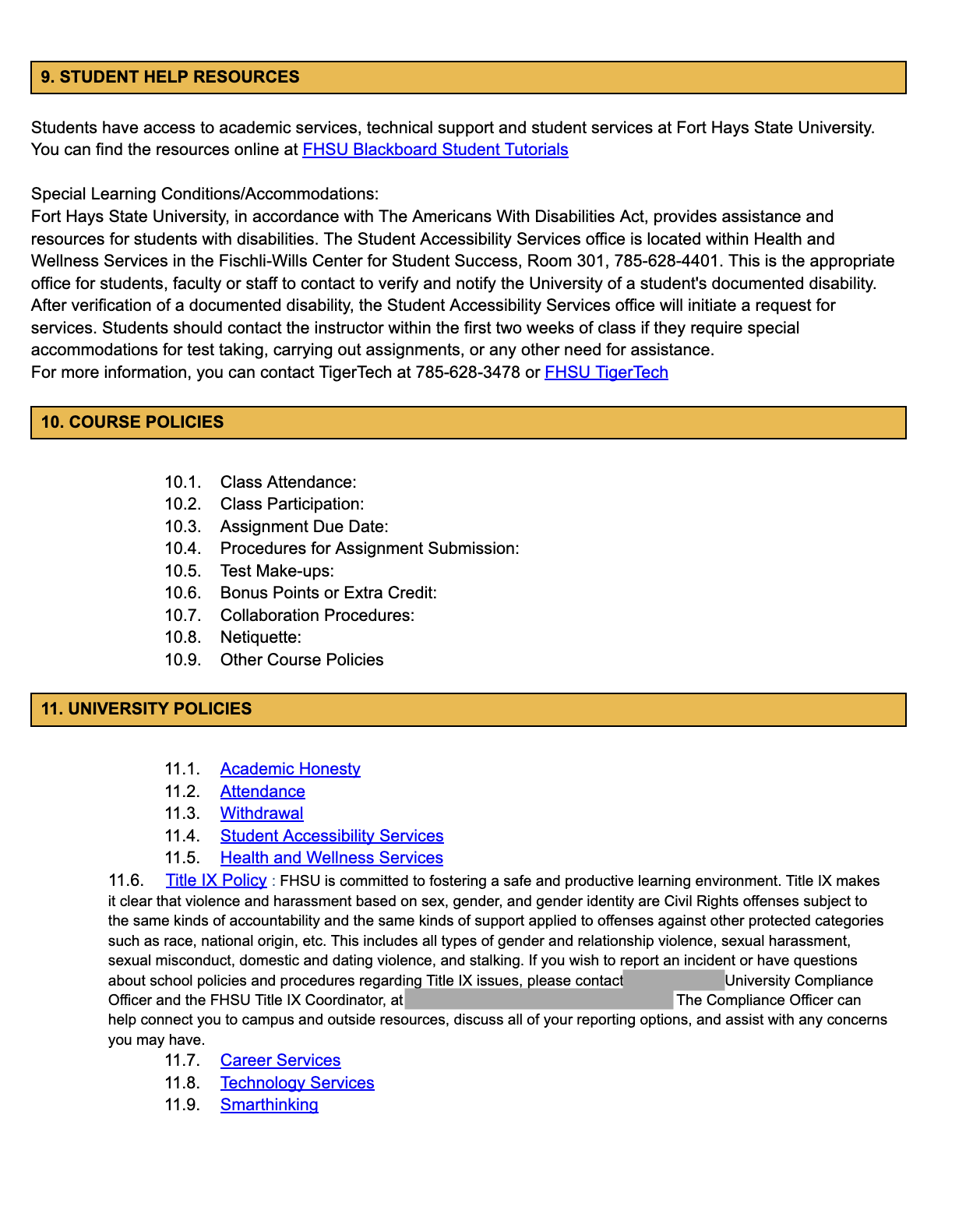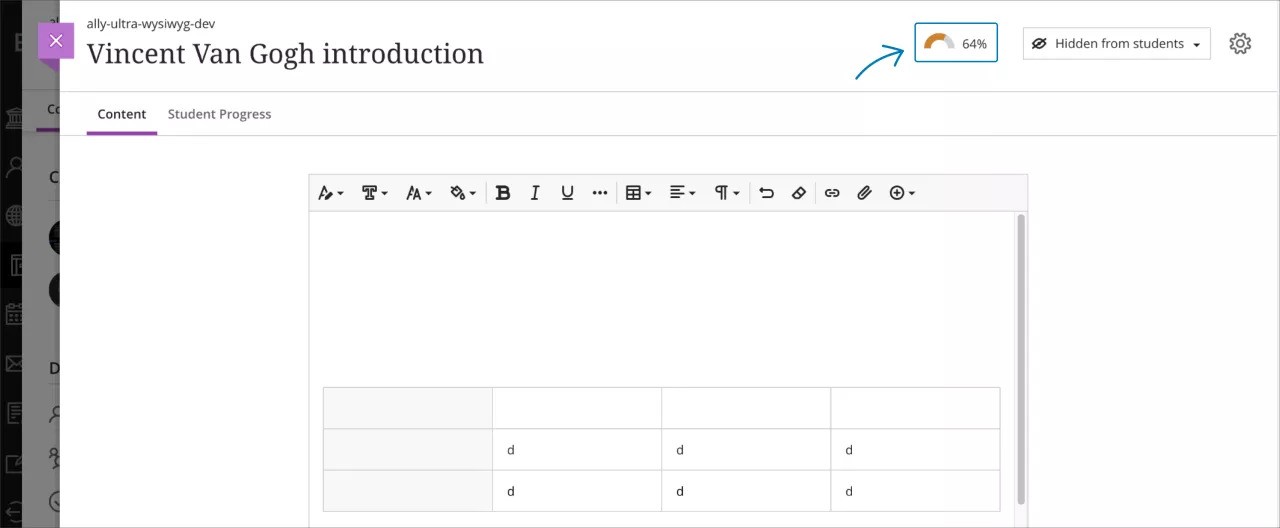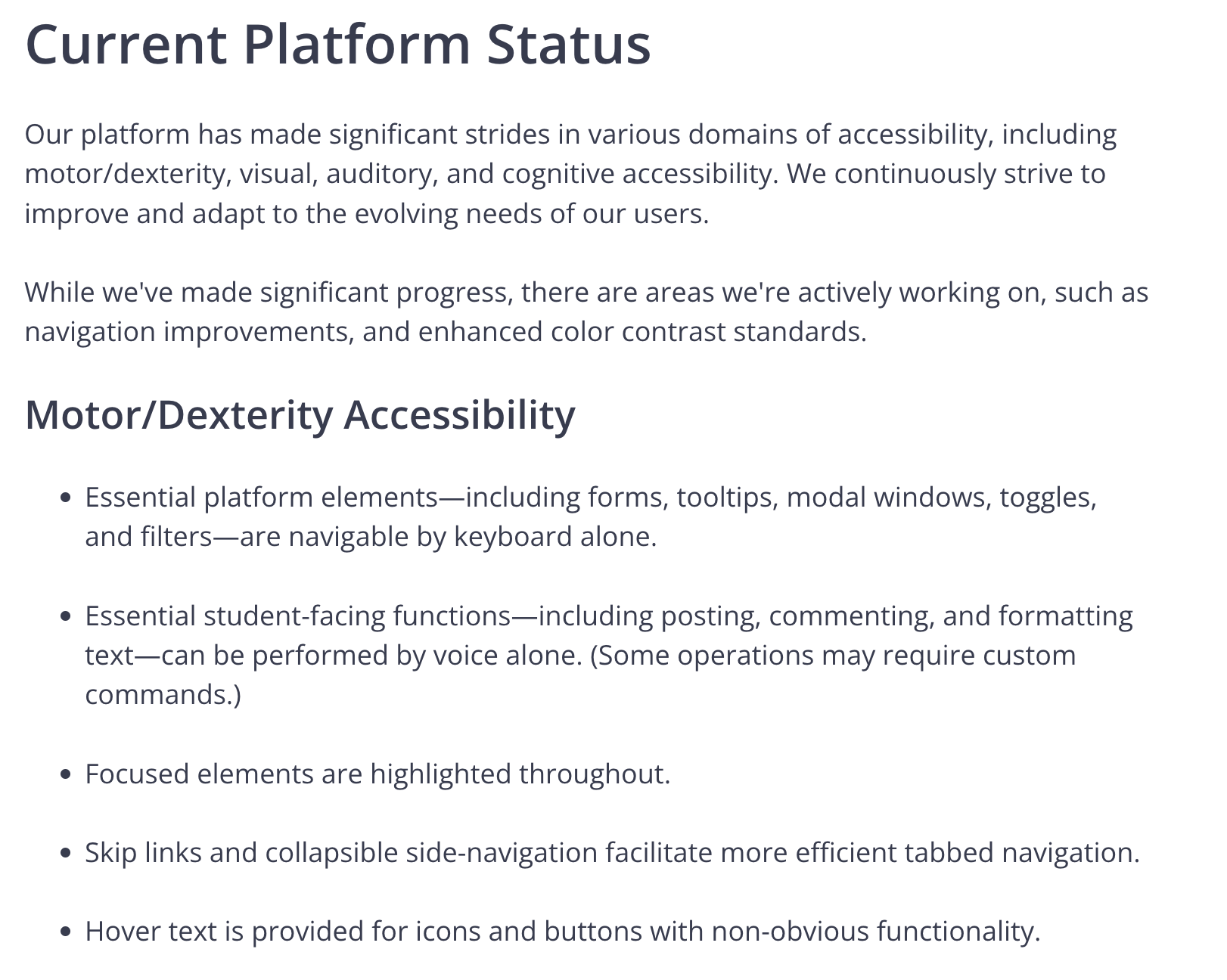Chapter 4 Inclusive Course Design
Chapter Learning Objectives
By the end of this chapter, you will be able to:
- explain the key components and importance of inclusive course design, including syllabus development, policies, and technologies.
- implement inclusive practices within syllabus creation, course policies, and the integration of inclusive technologies.
- analyze existing course materials, policies, and technologies for inclusivity, identifying areas for improvement.
- develop inclusive syllabi, policies, and technology integration plans tailored to diverse learner needs.
4.1 Introduction to Inclusive Course Design
Addy et al. (2021) summarize the three steps for instructors to take to design an inclusive course and implement inclusive pedagogy:
- Step 1: Understanding the necessity for inclusive teaching;
- Step 2: Becoming comfortable with a working definition of inclusive teaching;
- Step 3: Creating a roadmap for an inclusive course. A “roadmap typically takes the shapes of forms in a syllabus” (p. 47 ).
A syllabus is a “living constitution” through which instructors can establish inclusivity and communicate clearly to students (Addy et al., 2021, p. 50). An inclusive syllabus not only outlines the structure and content of a course but also reflects a commitment to an equitable and supportive learning environment. It acknowledges and addresses the diverse needs of students, aiming to reduce barriers to learning and participation. An inclusive syllabus includes policies and resources that help to ensure all students are supported in their learning. The elements are easy to include and do not require you to leave out critical course information (Finley, 2021). The significance of an inclusive syllabus lies in its potential to foster a sense of belonging, respect, and engagement among all students, enhancing their overall learning experience and success. Key components of an inclusive syllabus include:
- Clearly defined course outcomes help students understand what they are expected to learn and achieve by the end of the course. These outcomes should be measurable, achievable, and relevant to diverse student needs.
- Transparent grading criteria provide students with a clear understanding of how their performance will be assessed. This transparency helps reduce anxiety and ensure fairness in evaluation.
- Institutional accommodation policies, encouraging students to seek the support they need. These may include information on how to request accommodations and available resources for students with disabilities.
Whether online or in person, the student experience should include a sense of social belonging and feeling welcomed, valued, and respected inside and outside of their classes regardless of their backgrounds, socioeconomic status, or physical, psychological, intellectual, and linguistic abilities. Inclusive teaching and course design asks you to consider sociocultural factors, psychological, intellectual, and physical abilities when you are teaching existing courses or designing new courses. Inclusive methods are increasingly important for meeting diverse students’ learning needs. This concept is considered DEI pedagogy (diversity, equity and inclusion).
4.1.1 Principles of Inclusive Syllabus Design
When writing a syllabus, pay attention to the language and tone you use, as these factors can impact your students’ perceptions and engagement. An inclusive syllabus employs welcoming, respectful, and encouraging language, intentionally avoiding jargon and complex terminology that might alienate or confuse students. Your tone should convey openness, support, and a commitment to students’ success, fostering a positive and inclusive classroom climate.
To foster belonging and engagement, your syllabus should acknowledge the diverse backgrounds, experiences, and perspectives that students bring to the classroom. You can include strategies to promote interaction and collaboration among students, such as group projects, discussions, and peer feedback. Additionally, your syllabus should provide information about campus resources, such as tutoring centers, counseling services, and cultural centers that support student well-being and academic success.
4.1.2 Creating a Positive First Impression
Students often read the syllabus before the first day of class, making it their first impression of both the course and the instructor. Using a warm and welcoming tone can help you appear approachable and motivated to teach, thus shaping students’ initial perceptions positively. A syllabus written in this manner communicates expectations in an open and understanding way, which can foster positive motivation and reduce student stress.
For instance, compare the following examples:
Examples
- Instead of “If you need to contact me outside of class…,” use “I welcome you to contact me outside of class…”
- Replace “Students are required to attend all course sessions.” with “Students are expected to attend all course sessions; exceptions can and will be made and recordings will be posted to Blackboard.”
- Change “Some of the skills you should learn in the course include…” to “Some of the skills I hope you will learn throughout the course include…”
- Instead of “Late work will be penalized by 50%,” use “Late work is still eligible for 50% partial credit.”
Warm language helps create a supportive learning environment where students feel more comfortable engaging and reaching out when they need help. Focus on these three areas when analyzing your current teaching styles: social presence, social capital and social belonging. All three have their place when developing inclusive syllabus design.

4.1.3 Inclusive Course Design
Gamrat’s (2020) Inclusive Teaching and Course Design provides 16 steps faculty can take to support diversity, equity and inclusion (DEI) in their classes. Figure 4-1 lists each step. Reflect on how you can take these steps in your online or on-campus courses.
4.1.4 The INCLUSIVE ADDIE Model for Course Design
As mentioned in Chapter 1, ADDIE is a classic instructional design model used to develop an effective learner experience. However, the ADDIE model does not address inclusive course design or consider cultural issues. Gamrat et al. (2022) proposed the INCLUSIVE ADDIE Model to address these gaps and provided a downloadable workbook which can offer you guidance in designing an inclusive course. In her blog post Inclusive Teaching and Course Design, Reilley (2023) interprets this model based on her work experience, emphasizing the practical application of the INCLUSIVE ADDIE framework in course development. She highlights how the model’s additional sub-processes—such as introspection, needs assessment, and context reflection—enable educators to critically evaluate their own biases and assumptions while designing inclusive learning experiences. By integrating these elements, Reilley illustrates how faculty members can create a more equitable and accessible classroom environment, ensuring that students from diverse backgrounds feel valued and supported. Her insights align with the broader objectives of inclusive teaching by advocating for diverse course materials, varied teaching strategies, and ongoing evaluation to continuously enhance the inclusivity of instructional design.
4.2 Pedagogical Strategies for Designing Inclusive Syllabi
Addy et al. (2021) discussed important pedagogical strategies for designing an inclusive syllabus; two such strategies are Universal Design for Learning (UDL), and student-centered learning.
4.2.1 Universal Design for Learning
UDL is a widely used framework for improving teaching and learning to meet learners’ diverse needs and eliminate barriers in their learning process. A sample application of the UDL framework is to include closed captions on lecture videos to help students who cannot follow the speaker (s) in those videos. The following video explains how the UDL framework guides the course design.
UDL at a Glance (4:37 min)
Following the UDL framework helps to ensure students can interact with course content, students, and their instructors in diverse ways, and that students can work on diverse types of assessments in which they can demonstrate their knowledge and skills in different ways. Following the UDL framework helps to ensure students can interact with course content, students, and their instructors in diverse ways, and that students can work on diverse types of assessments in which they can demonstrate their knowledge and skills in different ways. These strategies lay the foundation for effective digital teaching practices. Later, in Chapter 6, we explore how these inclusive design principles connect to educators’ digital competence, including how tools like AI and accessible technologies can be applied responsibly to support equitable learning outcomes (Moy, 2025, Chapter 6). The UDL guidelines include three principles: 1) providing multiple means of engagement, 2) providing multiple means of representation, and 3) providing multiple means of action and expression (CAST, 2018).
4.2.2 Student-Centered Learning
Traditional syllabi often emphasize course content over the student learning experience. Shifting the focus from what the course will teach to what the student can learn centers the syllabus around students and their learning journey. This approach allows you to better understand and address each student’s needs, fostering a more inclusive learning environment.
Here are some tips to achieve this shift:
- Provide clear information on what students will need to do and the resources available to help them succeed.
- Be transparent about grading and expectations, enabling students to understand and meet the course requirements.
- Use inclusive language such as “we will…” and “you will…” instead of “this course will…” or “students will…”
- Clearly state what you hope students will learn through the course and the useful skills they can expect to gain.
By created a student-centered syllabus, you emphasize the importance of the learning process and create a more inclusive classroom atmosphere (Stanford, 2021).
4.3 Policies Related to Inclusiveness
Inclusive learning environments are based on the establishment and implementation of effective policies. These policies are guided by legal frameworks designed to ensure equity and accessibility for all students, including the Americans with Disabilities Act (ADA) and anti-discrimination laws. These laws mandate that educational institutions provide reasonable accommodations and maintain environments free from discrimination. In Chapter 3, we discussed the RSI standards mandated by the Department of Education, and how the OSCQR rubric can help you ensure RSI compliance.
Inclusive policies are essential for promoting equity and accessibility within educational settings. By adhering to these policies, institutions can eliminate barriers to education, foster a sense of belonging, and enhance overall student success.
Institutions often support inclusivity through diversity initiatives. These initiatives may include cultural competency programs, bias training for faculty and staff, and support services for students from diverse backgrounds. Examining these initiatives can help us understand their contributions to a more inclusive culture and provide a framework for implementing similar practices within our own courses. For instance, learning more about how a diversity training program enhanced cultural awareness among faculty may allow you space to consider the human images you use in your teaching, and think about how you might include more images of women, minoritized groups, or disabled persons in your materials.
Examples

To ensure that courses reflect institutional commitments to inclusivity, instructors should align their course structures and assessments with these policies. This alignment might involve designing assessments that accommodate different learning preferences, using inclusive language in course materials, and ensuring that all course content is accessible. Proactively addressing accommodation requests and accessibility concerns is vital, and instructors should communicate their willingness to accommodate students’ needs clearly, providing instructions on how students can request accommodations. Additionally, course materials should be designed with accessibility in mind, ensuring that students with disabilities can access and engage with the content. Below, you can see the FHSU syllabus template, with policies related to inclusivity and accommodations.
FHSU Course Syllabus section including policies:

Evaluating the effectiveness of institutional policies requires specific tools and metrics. Surveys, feedback forms, and performance data can provide insights into how well policies are working and where improvements might be needed. These tools help institutions measure the impact of their policies on student success and identify areas for further development. Moreover, advocating for policy revisions and improvements is essential for maintaining and enhancing inclusivity. You can collaborate with your faculty colleagues and university administrators to identify gaps in existing policies and propose changes that better support diverse student populations. This might involve forming committees, conducting research, and presenting findings to institutional leadership to drive policy changes.
Examples
- Inclusive policies, guided by legal frameworks like the ADA and anti-discrimination laws, are essential for creating equitable learning environments.
- Institutions support inclusivity through diversity initiatives and inclusive practices, which can serve as models for others.
- Aligning course structures and assessments with institutional policies ensures that courses reflect commitments to inclusivity.
- Evaluating policies using specific tools and metrics helps measure their effectiveness and identify areas for improvement.
- Advocacy for policy revisions and improvements is crucial for enhancing inclusivity over time.
4.4 Inclusive Technologies
Inclusive technologies play a pivotal role in promoting accessibility and engagement within educational settings. These technologies are designed to support the diverse needs of all learners, ensuring that everyone has equal access to educational resources and opportunities. By integrating inclusive technologies into course design, educators can create a more equitable learning environment that caters to a wide range of abilities and learning styles. The benefits of inclusive technologies for diverse learners are manifold, including enhanced accessibility, increased engagement, and improved learning outcomes.
4.4.1 Examples of Inclusive Technologies
There are numerous inclusive technologies available that can significantly enhance the learning experience for students. Enhancing how content is represented involves considering information formatting and incorporating media flexibility. Content can be communicated in multiple ways, including text, visuals, videos, and audio (Gronseth, 2018). Assistive technologies such as screen readers and captioning tools are essential for students with visual and hearing impairments. These tools enable students to access course content in formats that suit their needs, thereby removing barriers to learning. Case studies demonstrate the successful integration of these technologies in educational settings. For example, a university might implement captioning tools across all its online lecture videos, resulting in improved comprehension and engagement for students who are deaf or hard of hearing. Another example could be the use of screen readers in computer labs, allowing visually impaired students to navigate digital resources independently.
Examples
Did you know many of Fort Hays State University’s tech tools have accessibility features built in?
Blackboard Ultra (powered by Ally)



For a full list of resources used at Fort Hays State University, please visit our Tiger Learn blog.
4.4.2 Integrating Inclusive Technologies into Course Design
Selecting and implementing appropriate inclusive technologies requires careful consideration and planning. Educators should evaluate the specific needs of their students and choose technologies that will best support their learning. As we discuss practical applications such as screen readers, captioning tools, and flexible content formats, it is important to recognize that these tools are most effective when paired with deliberate professional practice. Chapter 6 provides a detailed framework for developing educators’ digital competence (Moy, 2025, Chapter 6), guiding ethical, effective, and accessible use of AI and digital resources to enhance student learning. Some students have disabilities in visual, auditory, physical, social/emotional, and focus/organizational dimensions, and all learners differ in areas of language, motivation, interests, learning preferences, study skills, and schedules (Gronseth, 2018).
4.4.3 Evaluating the Effectiveness of Inclusive Technologies
Assessing the impact of inclusive technologies on learning outcomes is crucial for understanding their effectiveness and identifying areas for improvement. Methods for evaluation can include student feedback, performance data, and usability studies. These assessments can help educators determine whether the technologies are meeting their intended goals and how they might be improved. It’s also important to address challenges and barriers to implementation. Common issues such as lack of training, limited resources, and resistance to change can hinder the successful integration of inclusive technologies. We should look at creating technology plans that fit the specific University and department policy, working alongside one another to make sure everything is appropriately included within our courses. Every technology plan should include an evaluation component, and multiple evaluation methods should be considered, specified, and employed to assess agreed-upon outcomes (Noeth & Volkov, 2004).
Conclusion
Key Takeaways
- Importance of Inclusive Syllabus Design: An inclusive syllabus aims to create an equitable and supportive learning environment by addressing the diverse needs of students. This includes defining clear learning outcomes, transparent grading criteria, and accommodation policies to reduce barriers to learning and participation.
- Welcoming Language and Tone: The language and tone used in a syllabus significantly impact students’ perceptions and engagement. Using welcoming, respectful, and encouraging language can foster a positive classroom climate, making students feel more comfortable and motivated to engage with the course.
- Centering Around Student Learning: Shifting the focus from what the course will teach to what the student can learn helps create a more student-focused and inclusive atmosphere. This approach involves providing clear information, using inclusive language, and emphasizing the learning process and useful skills students can gain.
- Policies for Inclusiveness: Establishing and implementing inclusive policies, guided by legal frameworks like the ADA and anti-discrimination laws, is crucial for promoting equity and accessibility. Institutions should support inclusivity through diversity initiatives and align course structures and assessments with these policies to reflect their commitment to inclusivity.
- Integration of Inclusive Technologies: Inclusive technologies, such as screen readers and captioning tools, enhance accessibility and engagement. Thoughtful selection and implementation of these technologies, considering students’ specific needs and ensuring usability and compatibility, are essential for creating an equitable learning environment.
Additional Resources
Podcast Episode: TILT Talk E17: Book Talk Part One–Evidence Supporting Inclusion and Major Principles
References
Addy, T. M., Dube, D., Mitchell, K. A., & SoRelle, M. (2021). What inclusive instructors do: Principles and practices for excellence in college teaching. Stylus.
Center for Applied Special Technology (CAST). (2018). Universal Design for Learning guidelines version 3. Retrieved January 25, 2025 from http://udlguidelines.cast.org
Center for Excellence in Teaching, Learning and Innovation (n.d.) Inclusive teaching practices & course design. University of Pennsylvania. Retrieved July 26, 2024 from https://cetli.upenn.edu/resources/inclusivity/practices-courses/
Finley, D. (2021, April 28). Inclusive syllabus. American Psychological Association. https://www.apa.org/ed/precollege/psychology-teacher-network/introductory-psychology/inclusive-syllabus
Gamrat, C. (2020, February 6). Inclusive Teaching and Course Design. EDUCAUSE. Retrieved February 2023 from https://er.educause.edu/blogs/2020/2/inclusive-teaching-and-course-design
Gamrat, C., Tiwari, S., & Bekiroglu, S. O. (2022, March 10). Inclusive ADDIE: Initial considerations for DEI pedagogy. EDUCAUSE. Retrieved February 2023 from https://er.educause.edu/articles/2022/3/inclusive-addie-initial-considerations-for-dei-pedagogy
Gronseth, S. (2018). Inclusive Design for online and blended courses. Educational Renaissance, 7(1), 14–22. https://doi.org/10.33499/edren.v7i1.114
Noeth, R. J., & Volkov, B. B. (2004). Evaluating the effectiveness of technology on our schools. ACT. https://www.act.org/content/dam/act/unsecured/documents/school_tech.pdf
Reilley, D. (2023, March 13). Inclusive Teaching and Course Design. Tiger Learn Blog. Retrieved July 26, 2024 from https://tigerlearn.fhsu.edu/inclusive-teaching-and-course-design/
Sellheim, D., & Weddle, M. (2015). Using a collaborative course reflection process to enhance faculty and curriculum development. College Teaching, 63(2), 52-61.
Stanford Teaching Commons. (2021). Building an inclusive syllabus. Retrieved February 20, 2025 from https://teachingcommons.stanford.edu/teaching-guides/inclusive-teaching-guide/planning-inclusive-course/building-inclusive-syllabus
Diversity, equity, and inclusion (DEI) pedagogy is a way of teaching that aims to create learning environments that are inclusive and equitable, and that give all students an equal opportunity to succeed.
Defines how participants relate to one another, which in turn affects their ability to communicate effectively.
Social capital is the value derived from positive connections between people.
Social belonging is the subjective feeling of inclusion or acceptance into a group of people
The Americans with Disabilities Act of 1990 or ADA is a civil rights law that prohibits discrimination based on disability.
Regular and Substantive Interaction (RSI compliance is the legal federal requirement that distinguishes the status of courses between distance education and correspondence courses)
The SUNY Online Quality Review (OSCQR) Rubric is an openly licensed course review tool developed by SUNY Online in collaboration with SUNY campuses. It is designed to ensure that online and blended courses are learner-centered, which provides inclusive learning experiences that prioritize learners' needs, goals, and preferences to engage learners and promote and foster their learning.
